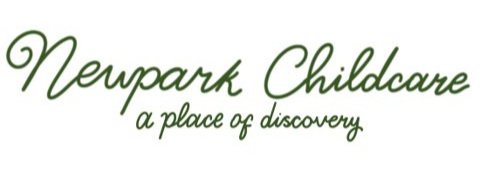Literacy
We appreciate it may be difficult to identify how some of the more ‘unusual’ activities that children work happily with at Newpark will lead to more obvious learning outcomes.
A key feature of the Montessori Method is that each material or activity is directly preparing the child for the next, like a chain of successive activities from age 2 to 5. So when we excitedly report your child’s mastery over a pouring activity, we are not simply celebrating their achievement at that point in time, but thinking ahead to the future academic potential that the child has now moved closer toward as a result of that achievement.
As a next step we would like to look at children’s journey through Literacy.
Practical Life Activities – e.g. polishing
The ability for a child to write does not simply rest on their understanding of the Latin symbols that make up our alphabet and their corresponding phonic sounds. In fact, a more important preliminary step is the ability to control a pencil, which requires highly developed fine motor skills and a great deal of concentration and patience. Therefore, Maria Montessori developed many enticing Practical Life and Sensorial Materials for 2 & 3 years old to utilize the ‘pincer grip’ that is needed for clear and neat handwriting. Through using this grip the child, without even realising it, is strengthening and preparing their hand and wrist for future handwriting.
Furthermore, the children are drawn to the beautiful materials resulting in a sustained interest which lengthens and deepens their powers of concentration so that when they first approach a more challenging activity such as forming their first letter with a pencil they have the requisite focus to persevere with such an activity without being put off by frustration if they are not able to achieve the desired end result immediately. For example, when polishing a mirror children use circular movements that are very similar to the movements they will use when tracing letters.
Sound Games:
The Sound Game helps children to identify the different sounds that form a word. This is very important; when the children write they have to decode the different sounds in a word in order to place the corresponding symbols. When reading, children have to identify a symbol and link it to its corresponding sound. Sound Games lay the foundations for this by giving the child plenty of opportunities to gain phonetic experience.
Sandpaper Letters:
After the child has repeatedly played ‘Sound Games’ they are introduced to the Sandpaper Letters. This material gives the children the symbol for the sounds that they already know, using their visual, auditory and tactile sense. When the children can trace single letters confidently and correctly, they can be introduced to the phonograms (green double letters such as ai, th, sh, oa). Children use Sandpaper Letters to copy them, first on chalk board and later on paper.
Moveable Alphabet:
Once the children can recognise most of the letters in the alphabet they can be introduced to the Moveable Alphabet, the first writing activity. Children are helped to analyse the sounds in a word and represent each sound with a symbol. The children realise with excitement that they can express their thoughts by using symbols to write different words. This activity often precedes a child’s readiness for handwriting, so the child can still express themselves whilst preparing their hand for writing with an instrument.
Metal Insets:
The Metal Insets prepare the child’s hand for writing. Children trace around a frame and its corresponding inset and then colour in the traced shape. Children gain control of the hand and master the use of a pencil by keeping within the limits of the shape. This activity also helps the children to gain strength and an important lightness of touch for writing.
Object Box 1:
Once children start reading what they have written with the Movable Alphabet they are ready for the first reading activity: the Object Box 1. This contains objects that can be spelt phonetically. The children discover that if they sound the symbols of a word and fuse the sounds together, they can read and that what they have read has meaning. They also realise that by reading they can discover others’ thoughts. This is an exciting revelation and often leads to an explosion of language development! After Object Box 1 the child is introduced to Object Box 2, where the green phonograms are included.
Reading Folders:
This activity helps the child to become familiar with the various ways in which a key sound can be written. The children’s work with this material does not only help them to be much more fluent when reading, but also helps them to improve their spelling when writing.






